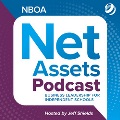As the fiscal year wraps up, independent school business leaders should be aware of the latest financial reporting and compliance changes. Fortunately, this year has few regulatory updates. My firm, CLA, has prepared these key insights to consider as you plan for year-end.
Accounting Standard Updates
There are multiple Accounting Standard Updates (ASU) that are effective for fiscal years beginning after December 31, 2023. The following summarizes key ASUs that may impact your organization:
- Debt with Conversion and Other Options (ASU 2020-06)
- Accounting for Contract Assets and Contract Liabilities in Business Combinations (ASU 2021-08)
- Derivatives and Hedging - Fair Value Hedging Portfolio Layer Method (ASU 2020-01)
- Leases – Common Control Arrangements (ASU 2023-01)
Although these ASUs are not expected to significantly impact most independent schools, it is important to be aware of their key provisions.
An ASU on the horizon addresses the accounting for, and disclosure of, crypto assets (ASU 2023-08). This ASU goes into effect for all entities with fiscal years beginning after December 15, 2024, but early adoption is permitted. Current accounting guidance requires that crypto assets are reported and disclosed as indefinite lived intangible assets and valued at historical cost less any impairment. Under the new ASU, organizations will now measure applicable crypto assets at fair value in the statement of financial position and then recognize any change in fair value through the statement of activities. Disclosures will need to be updated to include information about significant holdings, contractual sale restrictions and reconciliation of annual activity.
Audit Standard Updates
Another welcomed relief – there are no new audit standard updates that go into effect for this upcoming audit season.
Expense Allocations
While not a part of any upcoming accounting standard update, many institutions have had significant changes in operations over the past several years that over time may have had significant effects on how expenses are being captured, analyzed and reported in financial statements. These changes could include:
- New programming – core or auxiliary
- Changes in employee headcount
- Changes in campus footprint
If your school has experienced any of these scenarios, now might be a good time to revisit your functional expense allocation methodologies and determine if an update is needed. Proper expense allocation is crucial for nonprofit organizations, including independent schools, as it ensures transparency and accuracy in financial reporting.
Institutions should ask themselves the following:
- What bases are you using to allocate indirect costs? Are they still relevant?
- Have there been new indirect costs added that may need to be reanalyzed?
- Are the allocations telling the accurate story of how your institution spends its funds?
Independent schools should ensure that their functional allocation methods are consistent, well-documented, and provide a reasonable basis for addressing questions from donors, stakeholders and regulatory bodies. Outside parties have access to this information through your Form 990, and potentially your audited financial statements (if shared), so it is important that these documents are accurately telling your organization’s story so that users can make informed decisions about how you expend your financial resources. Your accounting advisor can help guide you through this process and be a source of knowledge for practical ways to approach your analysis.
Going Concern Matters
Most pandemic-era funding has been exhausted, leaving many institutions struggling financially. Consequently, evaluating and forecasting the appropriateness of the going concern assumption is becoming essential for some institutions.
Financial reporting under US GAAP assumes a reporting entity will continue operating as a going concern until liquidation is imminent. ASC 205-40 requires management to assess going concern each annual and interim reporting period, with a one-year look-forward from the financial statement issuance date (or the date the financial statements are available to be issued).
Cash flow forecasts serve as a valuable tool for management and boards in evaluating the viability of the going concern assumption. These forecasts should be subjected to stress testing and must take into account likely or anticipated events.
Warning Signs
Management should be vigilant for warning signs that may indicate going concern issues, such as:
- Significant debt coming due and/or failing debt covenants
- Significant operating losses
- Negative giving trends
- Borrowing against endowments
- Long-term negative program revenue trends
- Loss of significant funding
- Recurring negative cash flows from operations
Management’s Plan
Management must develop a plan to address these concerns if there is substantial doubt about the organization’s ability to continue as a going. This plan could include actions such as:
- Reviewing program profitability
- Assessing the ability to add auxiliary revenue sources
- Disposing of assets and using the proceeds to support operations
- Borrowing money or restructuring debt
- Reducing or delaying expenditures
- Obtaining new or additional funding
Management should consider the probability of implementing these plans and their effectiveness in mitigating going concern issues. The plan must be supported by cash flow projections, agreements, and other relevant documentation.
Auditor’s Evaluation
Auditors play a crucial role in evaluating management’s plan and obtaining audit evidence to support its feasibility. These responsibilities include:
- Obtaining sufficient audit evidence and concluding on the appropriateness of the organization’s use of the going concern basis
- Determining whether substantial doubt exists about the organization’s ability to continue as a going concern
- Understanding and assessing management’s plans for addressing any conditions or events that raise substantial doubt about the organization’s ability to continue as a going concern (if applicable)
- Evaluating financial statement effects and disclosures, and reporting appropriately
Disclosures and Reporting
When substantial doubt is raised, disclosures must be included in the notes to the financial statements. These disclosures should provide information on:
- Principal conditions or events that raise substantial doubt
- Management's evaluation of the significance of those conditions or events
- Management's plans to mitigate the conditions or events
If substantial doubt is alleviated, the auditor’s report may include an emphasis of matter paragraph. If not, the report must include a section titled “Substantial Doubt About the Entity's Ability to Continue as a Going Concern.” These modifications to the report and disclosures ensure transparency and provide relevant information to financial statement users.
Clean Energy Tax Credits
Under current legislation, The Inflation Reduction Act of 2022 (“IRA”) allows tax-exempt organizations to monetize federal tax credits for investments made in clean energy technologies. Clean energy projects can be expensive and the ability to access these credits and monetize them may be one way in which schools can make these projects more affordable.
Many institutions are availing themselves of these credits for projects that include the purchase and installation of solar panels, geothermal HVAC systems, and electric vehicle charging infrastructure.
Institutions that wish to take advantage of federal clean energy tax credits should ensure that the costs incurred are eligible under the current legislation. In addition, the credits need to be calculated, the credits need to be separately applied for, and the credits need to be claimed on a timely filed Form 990-T.
Institutions should consider involving their tax advisors in discussions about current or future planned capital projects that may involve clean energy technology to understand what potential tax incentives are available. See this article to learn more.
Employee Retention Credits
Many institutions have qualified and applied for the employee retention credit (“ERC”) that was made available during pandemic era federal funding. ERC is a fully refundable payroll tax credit for wages. To be eligible, during the eligibility period, organizations must have experienced a significant decline in gross receipts or have been more than nominally impacted by a government order that fully or partially suspended business operations.
The process for filing a claim involves determining eligibility for the credit, determining the amount of the credit you are eligible for, and then applying for the credit on a timely filed 941-X.
The current deadline to file an ERC claim for the remaining eligibility period is April 15, 2025, but future changes to legislation under the new presidential administration could impact that. To learn more, click here.
Staying current with accounting, audit, and tax updates is crucial for independent schools to ensure financial stability and compliance. By understanding recent changes, such as accounting standard updates, audit considerations, and opportunities for tax incentives, schools can make informed decisions that support their missions and long-term sustainability. Engaging with knowledgeable advisors and thoroughly evaluating financial practices will help schools navigate these updates effectively and continue to thrive in an ever-changing financial landscape.
The information contained herein is general in nature and is not intended, and should not be construed, as legal, accounting, investment, or tax advice or opinion provided by CliftonLarsonAllen LLP (CLA) to the reader.





